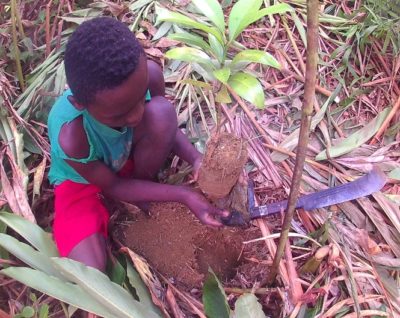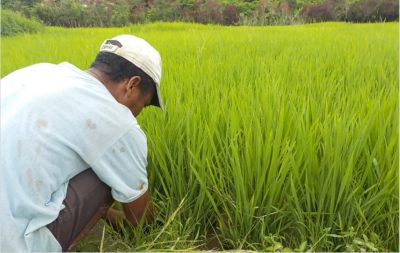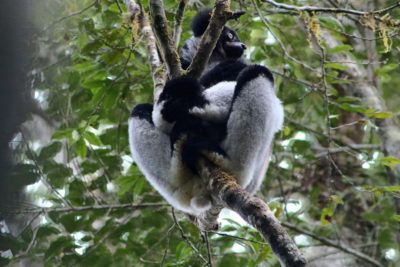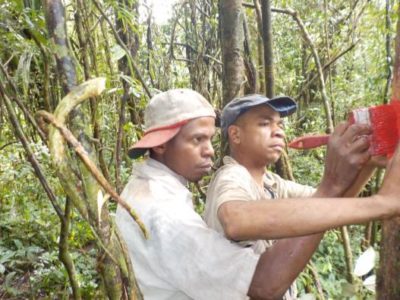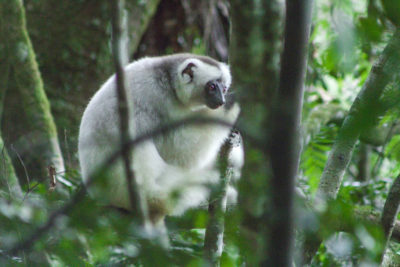Tell us a little bit about the history of Wildlife Conservation Society
Wildlife Conservation Society, an American organization, is an internationally recognized organization dedicated to the conservation of terrestrial and marine biodiversity as well as landscapes.
Since its launch in 1993, the WCS Madagascar Program works throughout Madagascar to ensure the long-term conservation of the country’s unique biological diversity with a focus on activities in priority landscape/seascapes.
WCS has been engaged in Makira since 2003 and led the creation of Makira Natural Park. It manages the protected area through a model of collaborative management with 75 community associations that in turn are responsible for management and protection of the “green belt” around the Park. WCS also develops and leads science-based, community-driven field conservation and capacity building programs in three priority seascapes: Toliara in the southwest, Antongil Bay in the northeast, and Nosy Be in the northwest.
Where is WCS located?
WCS Madagascar has its headquarter in Antananarivo, the capital of Madagascar, but has offices in each intervention area.
Which lemur species do you work with?
WCS works to protect Makira Natural Park which is home to 17 lemur species including Silky sifaka (Propithecus candidus) which is only found in the northeastern part of Madagascar, Red ruffed lemur (Varecia rubra) which is found only around the Antongil Bay area, White-belted ruffed lemur (Varecia variegata subcincta),and Indri (Indri indri). These are all Critically Endangered according to IUCN.
How does Wildlife Conservation Society help lemur conservation?
WCS helps lemur conservation through a combination of an improvement of law enforcement monitoring and the development of alternative to destructive practices as well as alternative sources of protein and an awareness raising campaigns. Thus, a series of regular control and surveillance patrols activities integrated into a land/seascape wide Law Enforcement Monitoring system using SMART (Spatial Monitoring and Reporting Tool) to inform conservation decision-making in relation to targeted lemur species. In addition, habitat loss was tackled through restoring the remaining zones of degraded areas of critical habitat for lemurs and increase connectivity through corridor re-establishment. As alternative community development activity, WCS has helped develop an array of income generating activities and promotion of improved production techniques such as intensified rice production in existing fields, small-scale livestock production, community ecotourism development, and so on.
WCS also developed a conservation enterprises program which is essential to achieving the goal of supporting communities to adopt alternative, sustainable and tangible economic activities, and to incite engagement in park management and conservation activities.
WCS has also an environmental education program to inform and engage local communities in the ecosystem conservation. The program tries to inspire people and young generations by using internet technology to discover worldwide best practices. The program aims to empower children from school intervention and young people with youth conservation clubs to become stewards of their environments.
WCS address environmental issues through advocacy, practical environmental actions, and youth radio broadcasting, and we support media outreach through weekly radio-programming, magazine production, and yearly cultural and environmental festivals; working with youth conservation clubs to address environmental issues through advocacy, practical environmental actions, and youth radio broadcasting. WCS also supports media outreach through weekly radio-programming, magazine production, and yearly cultural and environmental festivals.
What are some of WCS’s recent achievements?
- Continuous restoration of degraded forest in the 5 forest corridors of the Park to maintain continuity between forest blocks and ensure genetic exchange
- Regular control of the forest through community patrols to detect pressures and discourage authors from abandoning the Park. Numerous perpetrators have been sensitized and evacuated from the Park since the creation of the Park and hundreds of lemur traps have been destroyed.
- A large part of the park boundaries have been marked to inform communities about the Park area.
- Several hundreds of households have benefited from improved production techniques and various arrays of income generating activities, including improved irrigated rice intensification techniques (SRI-SRA) to improve rice productivity(with 4.7 T/ha in average, but could reach up to 10T/ha in places, instead of national average of 2.5T/ha).
- Promoting the cocoa and cloves sector to the benefit of the community to increase their source of income and reduce their dependence on forest resources. A cocoa cooperative is operational in the commune of Voloina whose production capacity is 300 kg of cocoa beans per year. Another cooperative is being created in the Municipality of Ambinanitelo. For the promotion of cloves, 733 households were provided with material supports to enable them to produce clove seedlings for nurseries.
What are some goals and expectations that WCS has for the future?
- Reduce human pressures within the Park to provide good security for lemurs and ensure their viability. It is expected that human pressures in the Park will be reduced within 5 years.
- Maintain continuity between the forest blocks to ensure the genetic exchange by restoration of the degraded area in the Park Forest Corridor. It is expected that the degraded areas of approximately 1,500 ha in the Forest Corridor will be restored within 5 years.
- Reduce communities’ dependence on forest resources by ensuring their food security and by providing them with different income-generating activities
Do you have volunteer opportunities at Wildlife Conservation Society?
Due to lack of expertise and /or lack of resources, we need volunteers in the following areas: environmental education, promotion of ecotourism, innovative technique of agricultural production, search of sustainable market for certain products, exhaustive census on lemur and other fauna groups populations, and plant inventories in the Park.
What do you need donations for right now?
- For the implementation of bio-inventories in the Park
- Further development of community conservation enterprises
How to Help
- Visit Wildlife Conservation Society’s profile on the Lemur Conservation Network
- Donate to Wildlife Conservation Society


